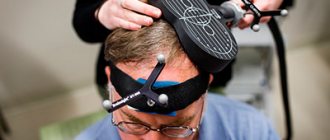Astheno-neurotic syndrome has many synonyms, among which the most famous is the name “chronic fatigue syndrome”. But even this term does not provide a complete understanding of the nature of the disorder, although it largely explains its appearance and nature. In general, astheno-neurotic syndrome is understood as a special type of neurosis, to which people with a sensitive, vulnerable psyche are most susceptible.
In recent years, there has been a sharp increase in the number of cases of diagnosis of this disease, also called neurasthenia. Moreover, among the patients there are not only adults, but also children of different ages! This is a clear reflection of the modern lifestyle, but astheno-neurotic syndrome cannot be called a harmless condition, since in advanced cases it leads to total apathy, deep depression or even suicidal tendencies. Therefore, it is very important to pay attention to the creeping trouble in time and find an effective way to cope with it.
Causes of development of astheno-neurotic syndrome
The main cause of this type of disease is the presence of a disorder of the autonomic nervous system, which, under the influence of frequent stress, severe lack of rest and other factors, develops into a full-fledged neurosis. Since the vast majority of modern people live in a frantic pace of life, are exposed to stress every day and everywhere, suffer from bad habits and, as a rule, eat on the go, not particularly caring about a balanced diet, this aggravates existing disorders and ultimately leads to the emergence of astheno-neurotic syndrome.
The most susceptible to developing this disorder are vulnerable people and children who react strongly to any failures and irritants, have also experienced psychological trauma, have problems with self-esteem, are brought up in an authoritarian style, or suffer from high parental expectations.
The number of prerequisites for the development of astheno-neurotic syndrome is so diverse that it is not always possible to accurately determine which of them caused its occurrence. The most common ones are:
- severe and frequent stress, especially tragic, deeply experienced events;
- regular overwork with lack of rest;
- infectious diseases accompanied by a rise in body temperature to high values, and, consequently, intoxication of the body;
- smoking, alcohol abuse, drug use;
- diseases of the endocrine system, in particular the thyroid, pancreas, and genital organs;
- poor nutrition, leading to a deficiency of not only vitamins and minerals, but also a sharp imbalance between consumed fats, proteins and carbohydrates;
- lability of the psyche with a tendency towards perfectionism;
- traumatic brain injuries.
In children, the main causes of the development of astheno-neurotic syndrome are:
- fetal hypoxia;
- birth injuries;
- intrauterine infections;
- the presence of malformations of the nervous system;
- the presence of bad habits in the mother during pregnancy.
Astheno-neurotic syndrome was previously diagnosed in children, but today the number of such cases has increased significantly. This is also facilitated by lifestyle changes and increased stress levels. Even preschoolers can become victims of this disorder, not to mention school-age children who have a huge mental load.
Prevention of asthenia
Sarklinik has developed an effective program “ Prevention of asthenia ”, which allows you to avoid future exhaustion of the nervous system. A healthy nervous system is a reality today. The peculiarity of the disease is that the symptoms slowly, gradually, but clearly increase, and the condition worsens sharply. Do not expect dangerous complications of asthenia, asthenic syndrome; contact Sarclinic for timely treatment.
Sign up for a consultation. They have contraindications. Specialist consultation is required.
Photo: (©) Bds | Dreamstime.com \ Dreamstock.ru The people depicted in the photo are models, do not suffer from the diseases described and/or all similarities are excluded.
Related posts:
Vegetative vascular dystonia: treatment of VSD, how to treat VSD, symptoms, signs
Transient ischemic attack: symptoms, treatment of the brain
Polyneuritis, treatment of polyneuritis, alcoholic polyneuritis, polyradiculoneuritis
Insomnia, treatment of insomnia in Saratov, what to do for insomnia
Trigeminal nerve, inflammation, treatment, trigeminal neuralgia, symptoms, how to treat
Comments ()
Symptoms of chronic fatigue syndrome
Astheno-neurotic syndrome is one of those disorders that develop slowly and can go unnoticed for a long time. Its first symptoms can be so ordinary that a person usually does not attach any importance to them, writes them off as a sign of fatigue, and is especially in no hurry to make an appointment with a doctor. But over time, under the influence of external and internal factors, the disorder progresses and significantly changes a person’s life, which can no longer go unnoticed. But the main problem is often a strong reluctance to do anything to correct the situation.
Initially, chronic fatigue syndrome may manifest itself:
- causeless irritability - an attack of anger can be caused by any little thing to which previously the same person would not have paid the slightest attention;
- increased fatigue;
- deterioration of immunity, as a result of which colds and other infectious diseases occur much more often.
In children, astheno-neurotic syndrome manifests itself much more clearly than in adults. Its occurrence may be indicated by:
- sudden changes in mood;
- loss of appetite up to complete refusal to eat;
- the appearance of bad habits, for example, biting nails, sucking fingers, etc.;
- the appearance of uncontrollable attacks of aggression, taking out anger on toys, younger brothers or sisters;
- increased moodiness, frequent crying;
- fatigue;
- headaches localized in different parts of the head;
- difficulties communicating with peers;
- loss of interest in studying, decreased performance.
Typically, people seek medical help only when the problem has gone too far and there is no way to cope with the depressive state on their own. At the same time, it is usually not the patient himself who makes an appointment with a doctor, but his relatives and friends, since he completely lacks the desire to do anything to improve his well-being.
In general, all symptoms of astheno-neurotic syndrome can be divided into 3 large groups:
- Physical – pain around the head that does not go away after rest, fatigue, increased blood pressure, problems with falling asleep and waking up, neurotic nature discomfort in the chest area like heart pain, enlarged lymph nodes, possible weight loss, fever and body aches, tendency to motion sickness in transport.
- Emotional – irritability, loss of interest in life and desires, pessimistic attitude, feeling of complete powerlessness, high level of anxiety, loss of sense of humor.
- Social – the emergence of addiction to alcohol or drugs in attempts to cope with the problems that have piled up, the decision to change place of residence, work, divorce, decreased need and desire to communicate with other people, including loved ones.
Stages
During the astheno-neurotic syndrome, 3 stages are distinguished, which successively replace each other in the absence of timely intervention. At the first or hypersthenic stage, it is extremely rare that the patient himself or his relatives notice the presence of signs of deviations from the norm. Constantly increasing fatigue and irritability are mistaken for overwork and a temporary phenomenon.
Over time, a person begins to lose control over behavior, as a result of which he may suddenly laugh or cry, but more often he reacts even to minor stimuli by screaming. Often there is a decrease in memory, the ability to concentrate, insomnia, headaches, weakness and a sharp decline in working ability. At this stage, chronic fatigue syndrome or neurasthenia is almost never diagnosed. Therefore, it smoothly moves into the second stage of development.
At the 2nd stage, excessive emotionality appears and physical symptoms of the pathology such as headaches, constant fatigue, and a pronounced decrease in performance appear. People with astheno-neurotic syndrome begin to experience problems with sleep: they are tormented by insomnia and constant drowsiness. All the time there is a strong desire to lie down and rest. Falling asleep, the patient may wake up from a nightmare or a surging feeling of anxiety, and rest, even a long one, does not bring the desired feeling of vigor and freshness. Every morning a person struggles with himself, getting out of bed no less tired than when he went to bed. At the same time, he becomes whiny and touchy; any word even accidentally dropped can seriously hurt him, which causes difficulties when communicating with other people.
At the third or hyposthenic stage, signs of pathological changes already become obvious. Constant fatigue and anxiety are replaced by absolute indifference to everything that happens around. The patient loses interest in news from the outside world and within the family, he is no longer interested in films and entertainment, he tries to isolate himself from society and avoids communicating with other people. As a result, prolonged depression sets in, which can only be overcome with the help of adequate medical care.
Consequences
If you ignore the signs of neurasthenia and do not carry out appropriate treatment for the situation, over time the disease can have quite dangerous consequences for physical health. It can lead not only to chronic headaches, eating disorders, the development of phobias and decreased libido, but also to:
- stroke;
- heart attack;
- hormonal disorders;
- exacerbation of chronic diseases, etc.
In addition, we must not forget that prolonged depression is fraught with persistent thoughts of suicide. Therefore, astheno-neurotic syndrome can have very serious consequences, which does not allow it to be ignored or treated negligently.
Chronic fatigue syndrome is no less dangerous for children. Due to the incomplete formation of their body, it leads to hormonal imbalances, which can result in thyroid diseases, developmental disorders, as well as diabetes, and subsequently reproductive dysfunction.
What does it look like from the outside
Astheno-vegetative syndrome has characteristic symptoms:
- depression;
- low stress resistance (change in the direction of decreasing quality);
- sleep disturbance, insomnia;
- development or exacerbation of psychoneurological disorders, diseases;
- overwork;
- low mental activity, due to inhibition of brain functions;
- low physical activity (difficulty transmitting impulses);
- tachycardia;
- headache (migraine);
- nervous sweating or chilliness (a combination of both symptoms is possible);
- lack of air, faintness.
The state of asthenovegetative syndrome also manifests itself in disturbances of the gastrointestinal tract, cardiovascular system, and respiratory organs.
Patients experience discomfort and pain in the body. The syndrome also manifests itself in high sensitivity and irritability; the skin is sensitive to irritants.
Article on the topic: Causes of vitamin deficiency - symptoms and manifestations in men and women, treatment methods
The sensory organs become highly sensitive. This is due to the fact that temporary damage to areas of the nervous system is characterized by instability in the transmission of impulses and reactions to stimuli, which leads to some stupor in the relationship between the surrounding world and the body; temporary adaptation is required.
Diagnosis and treatment of astheno-neurotic syndrome
Diagnosis of the disease does not require complex procedures. To identify neurasthenia, a survey of a neurologist is sufficient, but it is important that the patient is completely frank and does not hide any details. For an experienced specialist, it is not difficult to determine astheno-neurotic syndrome only from the existing clinical picture in the first stages of its development, not to mention the third. Therefore, treatment is prescribed immediately.
The main difficulty in diagnosis is discovering the cause or complex of factors that provoked the development of the disease. This point is always given paramount importance, since it is by influencing the cause that the existing problem can be completely solved, while symptomatic therapy will give an effect only for a while. But, unfortunately, it is not always possible to immediately identify all factors.
Treatment of astheno-neurotic syndrome is always complex and involves:
- drug therapy;
- psychotherapy;
- lifestyle corrections;
- therapeutic massage or manual therapy;
- physiotherapeutic procedures.
When a disease is detected in a child, it is usually enough to adjust the lifestyle. Eliminating frankly harmful foods and caffeine-containing drinks from the menu and replacing them with freshly squeezed juices, fruits, vegetables, berries, as well as avoiding prolonged viewing of TV, computer games, etc. usually helps bring the child’s condition back to normal. Long walks in the fresh air are very beneficial, especially before bed. At the same time, it is important to establish a daily routine and strictly adhere to it, so that the baby goes to bed at the same time and can fully rest.
Drug therapy and physical therapy
The nature of drug therapy is selected in accordance with the severity of chronic fatigue syndrome. Therefore, if at the 1st stage of its development it is enough to use herbal teas or traditional medicine in combination with taking complex vitamin preparations, then with more serious changes the prescription of a number of sedatives and antidepressants is required.
Thus, drug treatment for chronic fatigue syndrome may include:
- sedatives (sedatives) of plant origin, including tinctures of valerian, motherwort and complex preparations such as Persen - reduce the excitability of the nervous system and help reduce anxiety;
- antidepressants - prescribed when there is no effect from taking sedatives, they quickly relieve anxiety, calm, but can provoke the development of side effects;
- antiasthenic drugs – increase vitality and restore energy;
- nootropics – improve brain function, increase the ability to concentrate, improve memory and the course of thought processes;
- adaptogens, including Eleutherococcus tincture – help increase the body’s ability to adapt to changing living conditions;
- vitamins – have a general strengthening effect on the body.
The effect of the drugs is supplemented by the appointment of physiotherapeutic procedures. Most often, for astheno-neurotic syndrome, it is recommended to undergo a course of reflexology and electrosleep sessions.
Many people enjoy aromatherapy. In the absence of allergies, no one can prohibit the patient from using this treatment method to normalize the psychological state and overcome existing problems. But aromatherapy can only act as an auxiliary method of treatment, and does not replace the therapy regimen prescribed by the doctor.
Psychotherapy
Since personality traits and psychological factors play a large role in the development of astheno-neurotic syndrome, treatment of the disease, especially in the later stages of development, is impossible to imagine without the help of a psychotherapist or psychologist. This specialist will help to identify deep-seated personality problems, traumatic situations and work through them in order to eliminate the pressure they create.
It is almost always recommended that patients find an outlet for themselves - some kind of hobby that will bring pleasure and help them relax. This could be any activity from knitting, drawing, spending time with a pet, collecting coins, or reading.
Particularly effective elements of psychotherapy for patients with astheno-neurotic syndrome are art therapy and sand therapy. Drawing in general helps to cope with tension and throw out any accumulated emotions and experiences, and often it helps to get to the bottom of the problem and find an easy way to solve it.
Breathing exercises are of great benefit for people with chronic fatigue syndrome, as it has a relaxing effect on the body and puts you in a good mood.
Lifestyle correction
Since a person’s lifestyle plays an important role in the development of astheno-neurotic syndrome, much attention is paid to its correction. It is often recommended:
- to refuse from bad habits;
- increase the level of physical activity, cardio exercise and yoga are especially useful;
- avoid overexertion;
- alternate work with rest;
- take vitamins;
- pay attention to nutrition.
The diet for astheno-neurotic syndrome consists of avoiding the use of synthetic energy drinks, as well as minimizing the consumption of coffee, tea, and other caffeine-containing drinks. They are replaced with herbal infusions, hawthorn or rose hip infusion, tea with chamomile, mint, lemon balm, etc. Be sure to enrich the daily diet with fresh fruits and vegetables. At the same time, it is advisable to minimize the amount of fried and fatty foods and baked goods consumed.
Therapeutic massage and manual therapy
Both procedures involve manual pressure on the soft tissues of the back, which provides a pronounced relaxing and healing effect. But manual therapy differs from therapeutic massage in that during the session the specialist also works on the spine. As you know, the quality of functioning of the whole organism and especially the nervous system depends on its condition. Therefore, manual therapy sessions make it possible to influence the main link in the development of chronic fatigue syndrome – autonomic disorders.
Consequently, both therapeutic massage and manual therapy have a positive effect on the patient’s recovery rate. But if for mild forms of the disorder only therapeutic massage is sufficient, then for more serious disorders or the desire to achieve maximum effect, preference should be given to manual therapy.
Thus, almost everyone can encounter a disease such as astheno-neurotic syndrome. In the initial stages of development, it cannot be considered a life-threatening condition, but if the problem is ignored, it can still become a serious disorder. But timely, comprehensive treatment will allow you to completely cope with it and return to a normal, fulfilling life.










